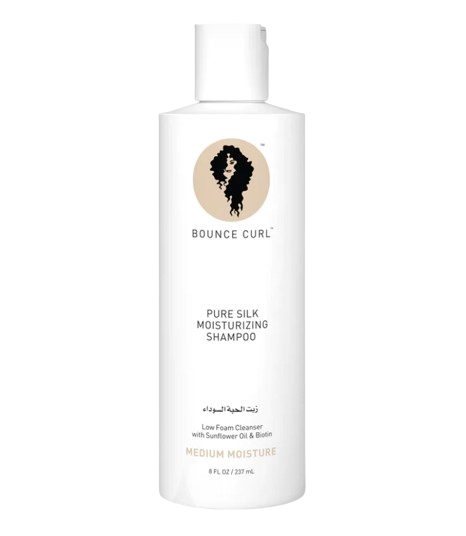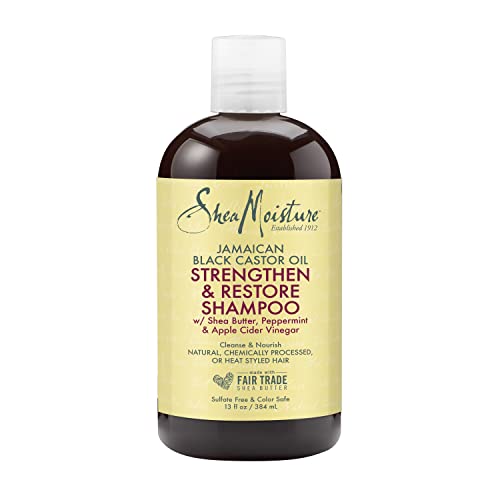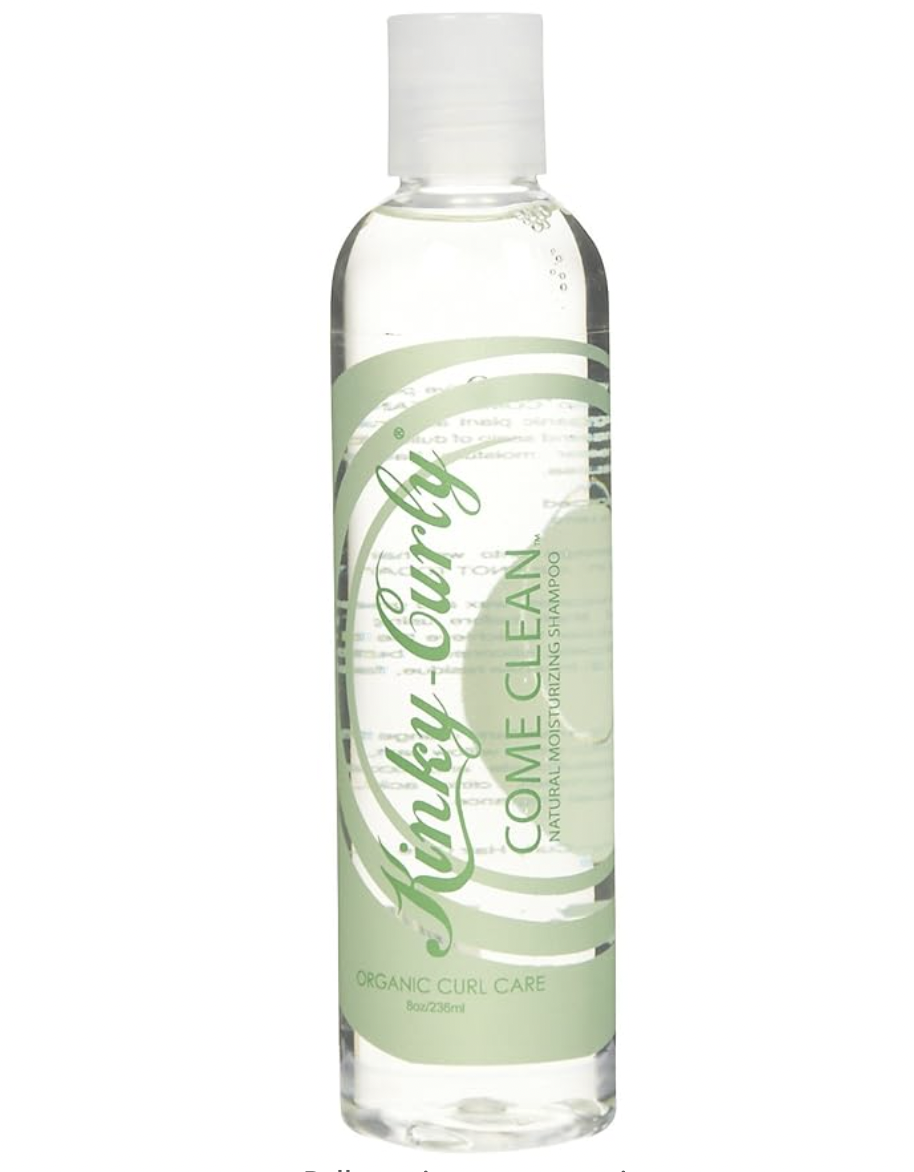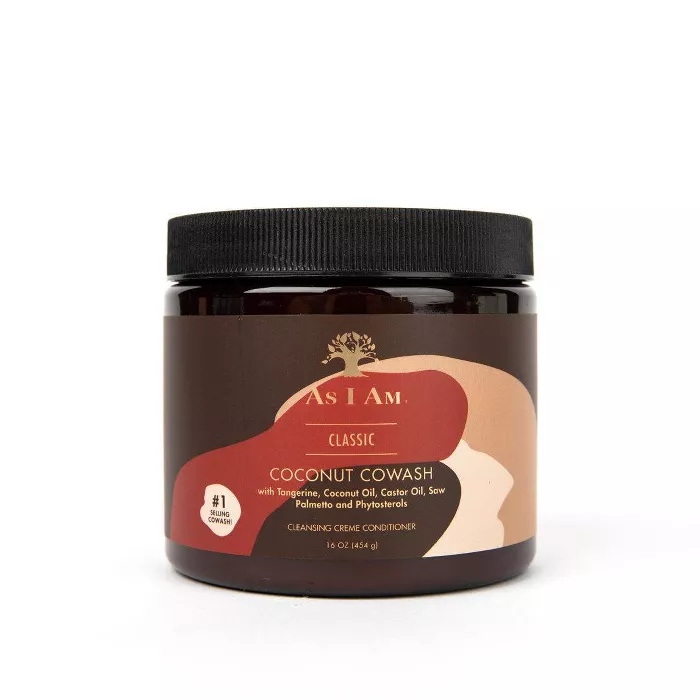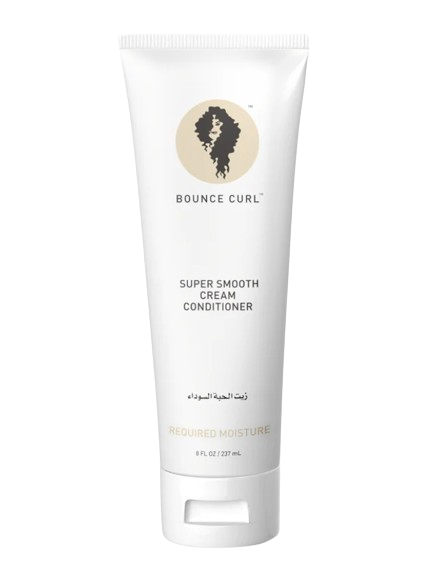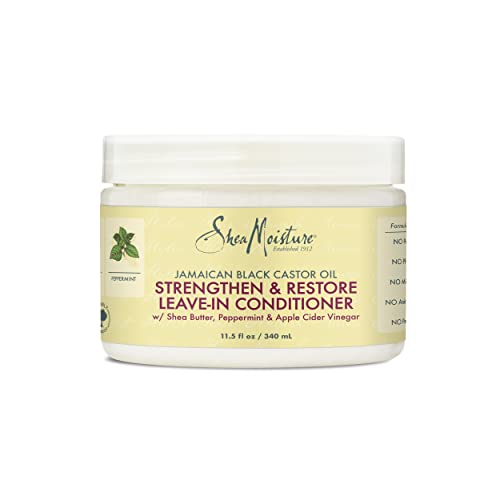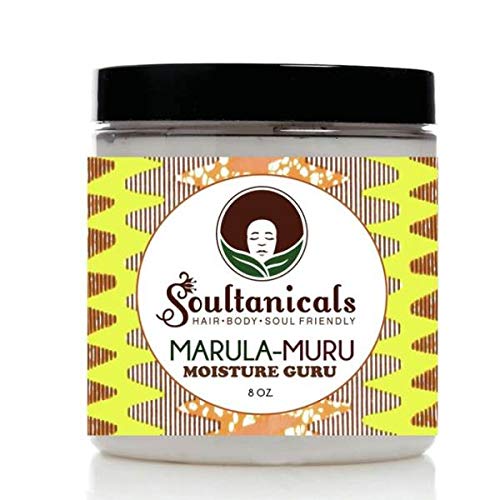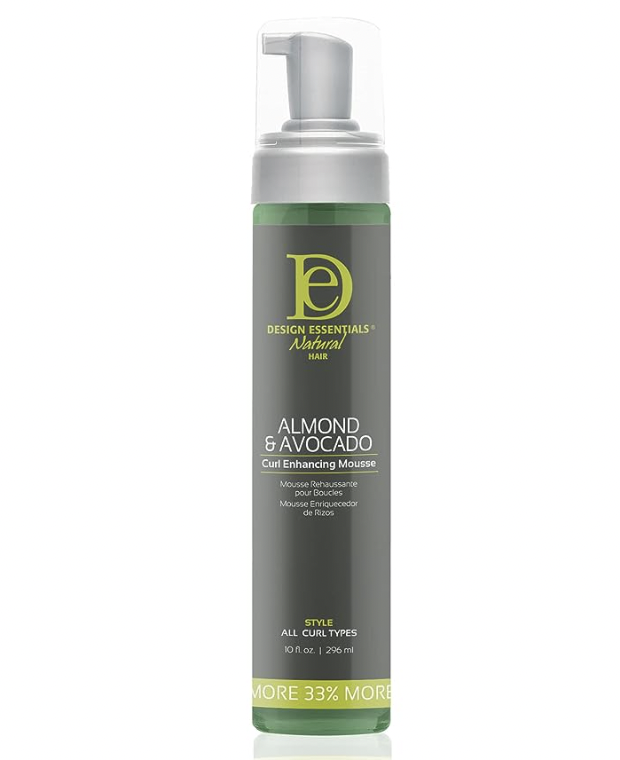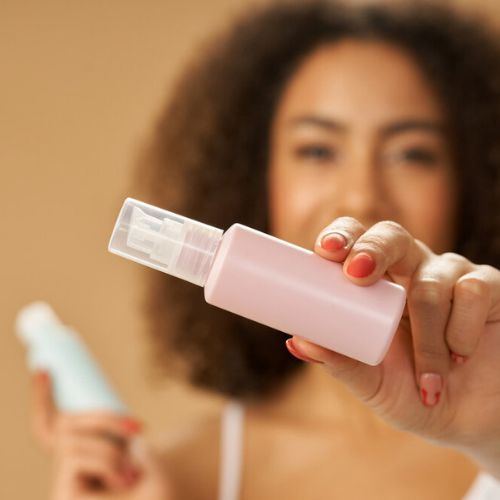Fact Checked & Reviewed By Leonela Paladino
Leo has more than 17 years of valuable experience as a researcher and lecturer in the Biology and Genetics field. Holding a PhD in Biology…
High porosity hair, characterized by its lifted cuticles and a heightened ability to absorb moisture, presents unique challenges and opportunities for those who possess it. At a microscopic level, the hair shaft of high-porosity hair has gaps and holes, making it more susceptible to moisture intake but also to moisture loss.
This structural distinction, rooted in the intricate science of hair biology, necessitates a tailored approach to care. Understanding the molecular dynamics of high-porosity hair is the key to unlocking its potential and ensuring it remains hydrated, resilient, and radiant.
This guide delves deep into the art of managing high-porosity hair, offering product recommendations and strategies to maintain its health and beauty.
What is High Porosity Hair?

In short, high porosity hair (also known as, “highly-porous” or “highly porous hair”) is damaged hair. The cuticles, or outer layers, exhibit gaps and openings along the hair shaft, impacting the hair’s ability to manage moisture. Although it can absorb moisture swiftly, retaining it is a struggle, leading to common issues like dryness and frizz.1,2,3
All hair is porous and permeable to water by nature.4 However, the extent of this porosity varies based on the health and condition of the hair’s cuticle layers.2

Think of high-porosity hair as a sponge; it soaks up everything around it, whether it be water or product. Thus, because of the numerous pores in the hair cuticle, porous hair will take on water and other chemicals readily.4
Causes of Porosity

From a structural and chemical standpoint, high porosity in hair is a result of gaps and openings in the hair’s cuticle layer.3 Several factors contribute to this condition:
- Chemical Treatments: Regular use of hair dyes, relaxers, bleach, or perms can erode the protective cuticle layer, making the hair more porous. This weakens the hair’s protein structure and compromises its protective cuticles. Also, these treatments often involve chemicals that break down the hair’s natural bonds to achieve the desired result, leading to increased porosity over time.4,5
- Heat Styling: Excessive use of high-heat tools such as straighteners, curling irons, or blow dryers can cause heat damage. Over time, repeated exposure to high temperatures can lift or fracture the cuticles, resulting in higher porosity.5
- Environmental Factors: Prolonged exposure to harsh environmental elements like sun, wind, or saltwater can degrade the hair’s cuticle, making it more susceptible to moisture loss and leading to increased porosity.6
Characteristics of High Porosity Hair
Do not determine that your hair’s porosity resembles anyone else’s simply because you both have a similar curl pattern. Just because you and another person have a similar curl pattern doesn’t mean you have the same hair porosity. Even if your hair textures look alike, porosity can differ between individuals.
You may have high porosity hair if you observe the following characteristics:
- A persistent dry texture.
- Frequent frizzy hair that’s resistant to styling.
- When you slide your fingers along a hair strand, it feels rough.
- Your hair may tangle easily due to lifted or missing cuticle layers, which create an uneven surface on the strands. Instead of sliding past each other smoothly, the strands catch onto one another, causing tangles.
- Hair is fragile and can easily be damaged when any tension or stress is applied, as it has minimal mechanical strength.
- After wetting your hair, if it dries in just a few minutes, it’s likely due to thinner, damaged, or lifted cuticle layers that allow water to escape easily.
- Rapid absorption of hair products.
- A lack of luster or shine.
“How you determine your hair’s porosity is something you learn from studying your hair by running your fingers over a hair strand, observing shine or reflectivity, how hydrated your hair feels on a daily basis, and your hair’s response to products. Learn by studying!? Yes, this is sensory and multi-faceted. You are the best judge of your hair’s porosity.”
How to Improve High Porosity Hair


Damaged hair is challenging to reverse, and cutting it off is often the most effective way to start afresh. However, there are measures you can adopt to maintain hydration, enhance elasticity, manage hair porosity, and shield it from further harm.9
Establishing a consistent, healthy hair regimen is vital. Focusing on smoothing down the cuticle layers can significantly address porosity concerns.10
And a crucial tip: always observe how your hair reacts to various products and treatments. Knowing what suits your hair best is fundamental to its well-being.
To read more about my healthy hair journey, read A Brief Look Into My Healthy Hair Journey.
Deep Condition
For optimal hair strength and health, it’s essential to maintain a consistent hair care routine focused on regular moisturization. Deep conditioning treatments or hair masks are ideal for high porosity hair, as they enhance its moisture retention.11
Those with porous hair should pay close attention to the amount of “slip” in their conditioners, as this will help reduce friction.9
To learn more about the key ingredients that should be included in deep conditioners for high-porosity hair, check out my blog, “Deep Conditioners for High Porosity Hair: Key Ingredients.”
Protein Treatments
Protein treatments provide significant benefits to hair by filling in the gaps between cuticles along the hair shaft with essential amino acids.
These treatments bond hydrolyzed proteins to the hair’s external and internal layers, ensuring a smoother texture that retains moisture, resists breakage, and helps prevent further damage.
Additionally, they are ideal for fortifying this type of hair and enhancing its ability to retain hydration.12
Notably, high porosity hair may not always necessitate protein treatments unless it has been previously damaged by the aforementioned factors.
Choose a protein treatment that resonates with your hair type and experience the benefits firsthand! To learn more about the specific proteins to look for in high-porosity hair, check out my blog, “11 Protein Treatments for High Porosity Hair.”
Pre-Poo Oil Treatment
Using a pre-poo oil treatment has transformed my hair routine. Applying oil to dry hair before shampooing guards against excessive water absorption (waterlogging), preventing hair swelling.13
I highly recommend coconut oil, especially Nutiva organic virgin coconut oil. Let it sit in your curls overnight for the best results. If coconut oil isn’t your preference, grapeseed or olive oil are great alternatives.14,15
Using oils on damp hair also helps in retaining its moisture. The LOC (liquid-oil-cream) and LCO (liquid-cream-oil) methods are particularly effective for this. They seal in moisture on your hair strands and release it slowly, ensuring lasting hydration.
Apple Cider Vinegar Rinse/Acidic Treatments
To maintain a healthy porosity level, it’s essential to use pH-balanced products. Hair and sebum naturally have a pH between 4.5 and 5.5, so keeping products within this range is crucial.16
Consider incorporating an acidic rinse or solution, like diluted apple cider vinegar, into your weekly routine for immediate porosity control.
Apple cider vinegar helps address porosity issues and lays the cuticle layers flat, rejuvenating your hair’s health and restoring its strength.15
However, always ensure you dilute the vinegar to achieve a pH of 4 and be attentive to your hair’s responses. Remember, every hair type is unique, so there isn’t a one-size-fits-all remedy.
ACV Rinse
I like to mix 1 teaspoon of apple cider vinegar with 8 ounces of distilled water. After shampooing and conditioning, I use the mixture as my final rinse before styling.
Green Beauty’s pH Stabilizing Spritz is a fantastic choice to rejuvenate your cuticles. This liquid formula effectively tightens and lifts raised or lifted cuticles, and it’s even convenient for post-workout use.
If you’ve experienced the aftermath of chemical processing on your hair, you’ll appreciate Roux Rejuvenating Porosity Control Corrector & Conditioner.
This product is my top pick for restoring hair strength, guarding against future damage, and maintaining healthy locks following any chemical treatment.
I can vouch for its remarkable effectiveness, especially when I thought my highlighted hair was beyond repair; it truly worked wonders in restoring its condition.
Essential Hair Care Tips for High Porosity Hair
- Wash Strategically: Avoid daily hair washing to retain natural oils.5
- Manage Moisture Exposure: Minimize prolonged saturation of your hair.
- Choose Hairstyles Wisely: Steer clear of tight hairstyles to prevent damage.6
- Prioritize Air Drying: Whenever possible, allow your hair to air dry. If you must use a blow dryer, opt for the warm-to-cool setting.17
- Protect from the Sun: Limit extended sun exposure to safeguard your hair.5
- Check Hair Porosity Periodically: Your hair’s porosity can change over time. It’s good to check it twice yearly to ensure you maintain the proper care routine and not inadvertently causing damage.
Product and Care Tips:
- Protein and Moisture Balance: High porosity hair benefits from a combination of protein and moisture-rich products.13
- Layering Products: High porosity hair can tolerate layering more products for added protection.
- Protein Treatments: Incorporate protein treatments to strengthen the cuticles as needed.13
- Cold Water Rinse: Rinse your hair with cold water to help flatten the cuticles.
- Deep Conditioning: Include deep conditioning treatments in your routine for improved hydration.12
- Gentle Detangling: Due to increased fragility, handle detangling with care to minimize damage.
Best Products for High Porosity Hair
To unlock the full potential of your high-porosity hair and nurture its unique needs, here is my curated selection of the best products designed to restore and revitalize your hair.
Shampoos
For more shampoo suggestions for high porosity hair and a list of ingredients to watch out for, this comprehensive guide has all the answers: The Best Shampoos for High Porosity Hair and Key Ingredients.
Use 'muse' at checkout for a discount.
Clarifying Shampoos
Co-Wash
Conditioners
If you’re searching for ideal conditioners specifically tailored to high-porosity hair, this guide can help: Rinse-Out Conditioners for High Porosity Hair: Key Ingredients – Learn Which Ingredients You Should Look For!
Leave-in Conditioners
Curl Creams
For more Curl Creams designed specifically for high porosity hair and what ingredients to be aware of, peruse this comprehensive guide: The Essential Ingredients You Need to Consider in Curl Creams for High Porosity Hair.
Foams / Mousses
Gels
If you need more gel suggestions for high-porosity hair, plus the exact ingredients to include and avoid, this thorough guide has all the answers: Best Gels for High Porosity Hair: Key Ingredients.
Use 'muse' at Bounce Curl's checkout for a discount.
Deep Conditioners
The Design Essentials Natural Hair Almond & Avocado Wash Day Deep Moisture Masque is it if you’ve been looking for a deep conditioning treatment to fortify and soften your dry, brittle hair. This is my absolute current favorite deep conditioner!
This luxurious formula is enriched with sunflower oil, providing essential moisture, softness, shine, and protection for dry hair.
Regular use can reduce breakage and enhance hair elasticity, promoting a healthy and lustrous appearance. Plus, a little goes a long way due to its concentrated nature.
To use, apply a palm-sized amount of this moisturizing mask from roots to ends, ensuring even distribution with a wide-tooth comb or your fingers.
Leave it on for 15 minutes, then rinse with cool water. Whether you have thick or fine hair, this nourishing mask deeply penetrates strands, leaving them soft, silky, and thoroughly moisturized.
On another note, here is a comprehensive guide offering the perfect deep conditioners for high-porosity hair, as well as an all-encompassing list of ingredients that are beneficial or should be avoided: Deep Conditioners for High Porosity Hair: Key Ingredients.
Oils
This thorough guide provides helpful information about the oils beneficial for high-porosity hair and a comprehensive list of ingredients that are advantageous or should be avoided: Discover the Most Beneficial Oils for High Porosity Hair.
Protein Treatments
Here is an extensive guide to the ultimate protein treatments that provide beneficial details on how high-porosity hair can be nourished and repaired and an in-depth list of ingredients: Protein Treatments for High Porosity Hair (Learn the Best Type of Proteins to Use).
If you need a good dandruff shampoo, check out my blog, ‘The Best Dandruff Shampoo for Curly Hair: Find the Right Solution for You.’
Differences in Low, Medium, and High Porosity Hair

Low porosity hair is a technical term that measures the number of small openings and pore size in each strand relative to broken or damaged hair.6
Those with medium porosity hair (also known as normal porosity hair) have medium-sized cuticle openings and a medium amount of pores, which permits active ingredients and water to easily enter their strands.
High-porosity hair is easily recognized with a large number of pores and plenty of empty spaces or gaps along its shaft. It’s often drier, more brittle, and tangles more easily than other type of hair.18
FAQs
Is high porosity hair good or bad?
There is no right or wrong answer to this question – it all depends on your hair’s condition. High-porosity hair can often be more prone to dryness, frizziness, and tangling, but it can also be very manageable with the right products and routine.
Is low or high-porosity hair better?
Again, this is a question with no definitive answer. Low-porosity hair can be harder to moisturize and style but often has more shine.
High-porosity hair can be more prone to dryness and frizziness, but it can also be easier to manage if you find the right products and routine.
What are the signs of low porosity hair?
If your hair is resistant to styling products, takes a long time to get fully wet or dry, is often frizzy, or absorbs products slowly (products seem to sit on top of your hair rather than penetrate it), you will likely have low porosity hair.
Does high-porosity hair dry quickly?
Yes, it tends to dry quickly, but different factors can also affect it.
For example, if you live in a humid climate or if the air is very dry and/or heated then both high and low porosity hair will take longer to completely dry than they would otherwise. Does high porosity mean I have a bad scalp?
No, it does not mean that you have a bad scalp. High porosity simply refers to the condition of your hair’s cuticle and how easily water and other products can penetrate your hair.
How often should you wash high-porosity hair?
This is another question that does not have a definitive answer.
Some people with high porosity hair feel the need to wash their hair every day due to their lifestyle, while others can go several days or even a week without washing and still have healthy-looking hair.
It all depends on your scalp and lifestyle, how much product you use, and how often you use them.
If I have high-porosity hair, will it eventually become low-porosity?
Hair porosity is largely determined by your hair’s structural characteristics, such as the cuticle’s condition. While you can change your hair’s inherent porosity with chemicals and other external treatments, these alterations may come with risks, such as damage to the hair structure.
You can, however, improve its health and manageability with proper care. By adopting a suitable hair care routine, you can enhance the overall health of your hair.
How do you grow high-porosity hair?
There is no one-size-fits-all answer to this question, as the best way to grow high-porosity hair may vary depending on your hair type, condition, and genetics.
However, some tips for growing high-porosity hair include using a moisturizing shampoo and conditioner and applying deep conditioning treatments regularly. Also, use a leave-in conditioner, moisturizing styling product, and protein treatments (as needed).
How do you reduce frizz in high-porosity hair?
Again, this depends on your routine and the products you use. If you are using many drying ingredients in your products, you will need to replace them with more moisturizing options.
You can also use a product specifically designed to reduce frizz, like anti-humectants. Sleep on a silk or satin pillowcase. Use a microfiber towel or an old T-shirt when drying your hair.
Don’t wash your hair with hot water. Don’t touch your curls as they’re drying. Lastly, avoid using heat-styling tools as much as possible.
Is high porosity hair sensitive to protein?
This is another question that does not have one answer.
Some people with high porosity hair do not respond well to protein treatments, but others need them to look their best and reduce frizz.
Many factors can play into this (such as the type of protein treatment used), so it is always a good idea to start slowly and pay attention to how your hair responds.
References
- Barba C, Martí M, Manich AM, Carilla J, Parra JL, Coderch L. Water absorption/desorption of human hair and nails. Thermochim Acta. 2010;503–504(1):33–9. ↩︎
- Hessefort YZ, Holland BT, Cloud RW. True porosity measurement of hair: A new way to study hair damage mechanisms. J Cosmet Sci. 2008;59(4):303–15. ↩︎
- Robinson V. A study of damaged hair. J Soc Cosmet Chem. 1976;27:155–61. ↩︎
- Velasco MVR, Dias TC de S, Freitas AZ de, Vieira Junior ND, Pinto CAS de O, Kaneko TM, et al. Hair fiber characteristics and methods to evaluate hair physical and mechanical properties. Brazilian J Pharm Sci. 2009;45(1):153–62. ↩︎
- Horev L. Environmental and cosmetic factors in hair loss and destruction. In: Tur E, editor. Environmental Factors in Skin Diseases. S.Karger AG; 2007. p. 103–17. ↩︎
- Robbins CR. Chemical and Physical Behavior of Human Hair. 4th ed. New York, NY: Springer; 2002. 483 p. ↩︎
- Kelly SE, Robinson VNE. The effect of grooming on the hair cuticle. J Soc Cosmet Chem. 1982;33:203–15. ↩︎
- Robbins C, Kamath Y. Hair breakage during combing. III. The effects of bleaching and conditioning on short and long segment breakage by wet and dry combing of tresses. J Cosmet Sci. 2007;58(4):477—484. ↩︎
- Bosley RE, Daveluy S. A primer to natural hair care practices in black patients. Cutis. 2015;95(2):78-80,106. ↩︎
- Trüeb RM. Aging of hair. J Cosmet Dermatol. 2005;4:60–72. ↩︎
- Marsh J, Gray J, Tosti A. Cosmetic Products and Hair Health. In: Marsh JM, Gray J, Tosti A, editors. Healthy Hair. Cham: Springer International Publishing; 2015. p. 101–31. ↩︎
- Aguh C. Developing a Healthy Hair Regimen I: Formulating an Optimal Cleansing and Conditioning Regimen. In: Aguh C, Okoye GA, editors. Fundamentals of Ethnic Hair. Cham: Springer International Publishing; 2017. p. 79–89. ↩︎
- Keis K, Huemmer CL, Kamath YK. Effect of oil films on moisture vapor absorption on human hair. J Cosmet Sci. 2007;58(2):135–45. ↩︎
- Barve K, Dighe A. Hair Conditioner. In: The Chemistry and Applications of Sustainable Natural Hair Products. Cham: Springer; 2016. p. 37–44. ↩︎
- Demir E, Acaralı N. Comparison on Quality Performance of Human Hair Types with Herbal Oils (Grape Seed/Safflower Seed/Rosehip) by Analysis Techniques. ACS Omega. 2023;8(9):8293–302. ↩︎
- Gavazzoni Dias MFR, de Almeida AM, Cecato PMR, Adriano AR, Pichler J. The Shampoo pH can Affect the Hair: Myth or Reality? Int J Trichology. 2014;6(3):95–9. ↩︎
- Lee Y, Kim Y-D, Hyun H-J, Pi L, Jin X, Lee W-S. Hair shaft damage from heat and drying time of hair dryer. Ann Dermatol. 2011;23(4):455–62. ↩︎
- Dubief C, Mellul M, Loussouarn G, Saint-Léger D. Hair Care Products. In: Bouillon C, Wilkinson J, editors. The Science of Hair Care. 2nd ed. CRC Press; 2005. p. 141–82. ↩︎



